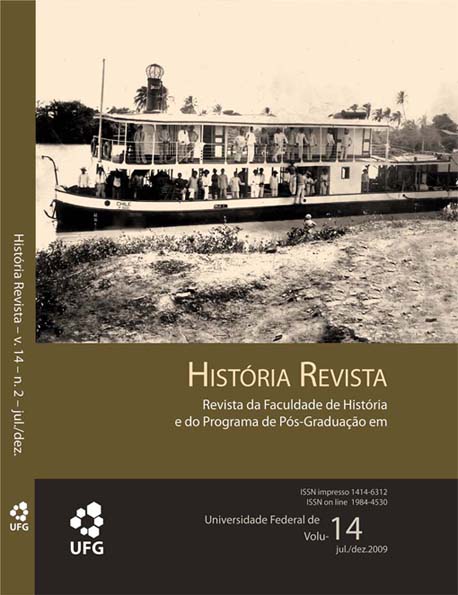CADÊ A ÁGUA QUE ESTAVA AQUI? OS LEITOS SECOS NA MEMÓRIA E NA HISTÓRIA
DOI :
https://doi.org/10.5216/hr.v14i2.9516Résumé
Este artigo refere-se a um estudo de caso, realizado no município goiano de Hidrolândia – GO. Tal estudo discute, desde as perspectivas da História Ambiental e da História Oral, as possibilidades do deslindamento de realidades históricas construídas sobre paisagens que, na atualidade, são vistas como abjetos, devido o estado de degradação em que se encontram. Dito de outro modo, se, por um lado, a historiografia, após o processo de alargamento de suas abordagens temáticas, adotou os grandes e médios rios como importantes fontes de pesquisa; por outro, esqueceu-se de uma colossal malha hidrográfica representada por pequenos cursos d’água – riachos, regatos, ribeirões, sangradouros, entre outros, que, em boa medida, encontra-se atualmente extinta ou agoniza diante de ações predatórias. Com basenisso, a inquietação que conduz nossa investigação é a de saber para onde são mandados os rios que secam. Assim, tentaremos mostrar que esses múltiplos espaços hidráulicos,
principalmente aqueles cujos leitos já secaram, participam diretamente da construção de memórias, dado à importância que tiveram na vida de populações, outrora servidas por suas
águas, seja na produção de seus domínios socioeconômicos ou na construção dos mapas de mundo ao seu redor.
Téléchargements
Téléchargements
Publié-e
Comment citer
Numéro
Rubrique
Licence
Declaração de Direito Autoral
Concedo à História Revista o direito de primeira publicação da versão revisada do meu artigo, licenciado sob a Licença Creative Commons Attribution, que permite o compartilhamento do trabalho com reconhecimento da autoria e publicação inicial nesta revista.
Afirmo ainda que meu artigo não está sendo submetido a outra publicação e não foi publicado na íntegra em outro periódico, assumindo total responsabilidade por sua originalidade, podendo incidir sobre mim eventuais encargos decorrentes de reivindicação, por parte de terceiros, em relação à autoria do mesmo.



